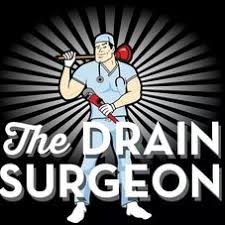What are Skilled Workers?
A skilled worker has specific skills that allow them to perform tasks that someone without those skills would not be able to effectively perform. The skills come in the form of intellectual knowledge (math, logic, communication, science, social sciences); procedural training (the sequence of events of a set of tasks); and technical techniques (how to take blood, how to weld two pieces of steel using a mig welder, how to safely use a sawzall).
An unskilled worker is often called a laborer. Unskilled tasks are ones that can be performed with no or minimal training. Mowing a lawn, digging a hole for a fence post, or cooking pancakes fall into these categories.
Many workers grow skilled by working and learning a job, on-the-job. This organic accretion of knowledge comes from trial and error, coaching by more experienced colleagues.
Apprenticeship programs provide a formal process for this growth in knowledge and acknowledge the time it takes to master a set of skills. The model apprenticeship model takes an unskilled employee and pays them to perform unskilled tasks while they build their skills through on-the-job work and formal training. Over time successful apprentices will become journeymen and/or foreman or supervisors or managers.
What is a Craftsman vs. a Skilled Worker or Tradesman?
A craftsman must be a skilled worker. They need to be an expert at each of the set of skills included in their craft. For example a custom cabinet maker must know:
How to use all of their tools,
About wood: their respective characteristics, variations, changes as they age,
Joining techniques
Hardware
Finishing
How to repair damaged cabinets (e.g., re-finishing, hardware replacement, water or insect damage, etc.)
A craftsman is usually working on a custom or small run production item.
The plans they are working from may be their own or they may be provided by a designer.
The product they produce is created from scratch, not from a kit.
The person who assembles an Ikea shelf unit is not a craftsman.
The person who creates a custom set of shelves using a variety of woods, attachment hardware, and
The product created by the craftsman is built with function and form in mind.
The quality of the execution of the craftsman will be judged by other craftsmen in the same “art” as worthy of the “craftsman” label. (peer review)
Is a Craftsman an artist?
An artist is a craftsman (although they may not embrace this title.) They must know the skills of their artistic media (oil paints, wood sculpture, digital photography, etc.)
To be an artist, a craftsman must be creating unique products which they are designing themselves. (e.g., the quilt makers (alabama) are artists because their quilts are unique designs and to the extent that they are working from a pattern they have developed the pattern.) Alternatively, a quilter who is working to quilt a basket pattern quilt is a craftsman. Their skills are developed and they are choosing the size and scale of the quit and the fabrics. However, because the pattern is established and has been developed by others, they are not an artist.
What about Blue Collar workers?
“Blue collar” is a broad term. It includes most trades people and manufacturing line workers. A blue collar worker is using their hands (and their brains) to perform the work. They are not artists or craftsmen. But most will be skilled workers. And many will be very skilled having accumulated tremendous knowledge about their trade -- the hands on technical techniques, the procedural techniques and the intellectual knowledge.
How different is a Blue Collar worker from a Professional performing hands-on tasks?
The difference between the job and skills of a residential plumber and a cardiovascular surgeon is a matter of degree. The surgeon is working on a smaller scale, has more tools and has the risk of a patient’s life and health at stake.
Dimension | Cardiovascular Surgeon | Residential Plumber |
Risk of mistakes | Death, very high | Water damage, medium |
Tools | Expensive, specialty, rapid evolution, integrated with electronics | Moderate cost, moderate evolution, some incorporation of video and sensors $150 - 4000. |
Support | Huge infrastructure of facilities (hospital), staff (nurses, anesthesiologist, radiologist, vendors, specialists, technologists, lawyers, etc.) | Little/none, the “owner at the shop”, possibly the distributor of the specialty equipment. |
System Complexity | Very high (see above) | Medium |
Work Environment | Highly controlled. Patient comes into examining/ operating room. | Highly variable. Work performed in field, often difficult, unpleasant work conditions. |
Training + Literature | Sophisticated: 10+ years of medical school and specialty training. Ongoing regulated certification. Detailed vendor training. | Little. Typically self motivated. Union plumbers are exception. Larger companies may provide more. |
Regulations | High. Medical Certifications, Hospital Certifications. | High. Building code. State Contractor License regulations. |

0 Comment(s)